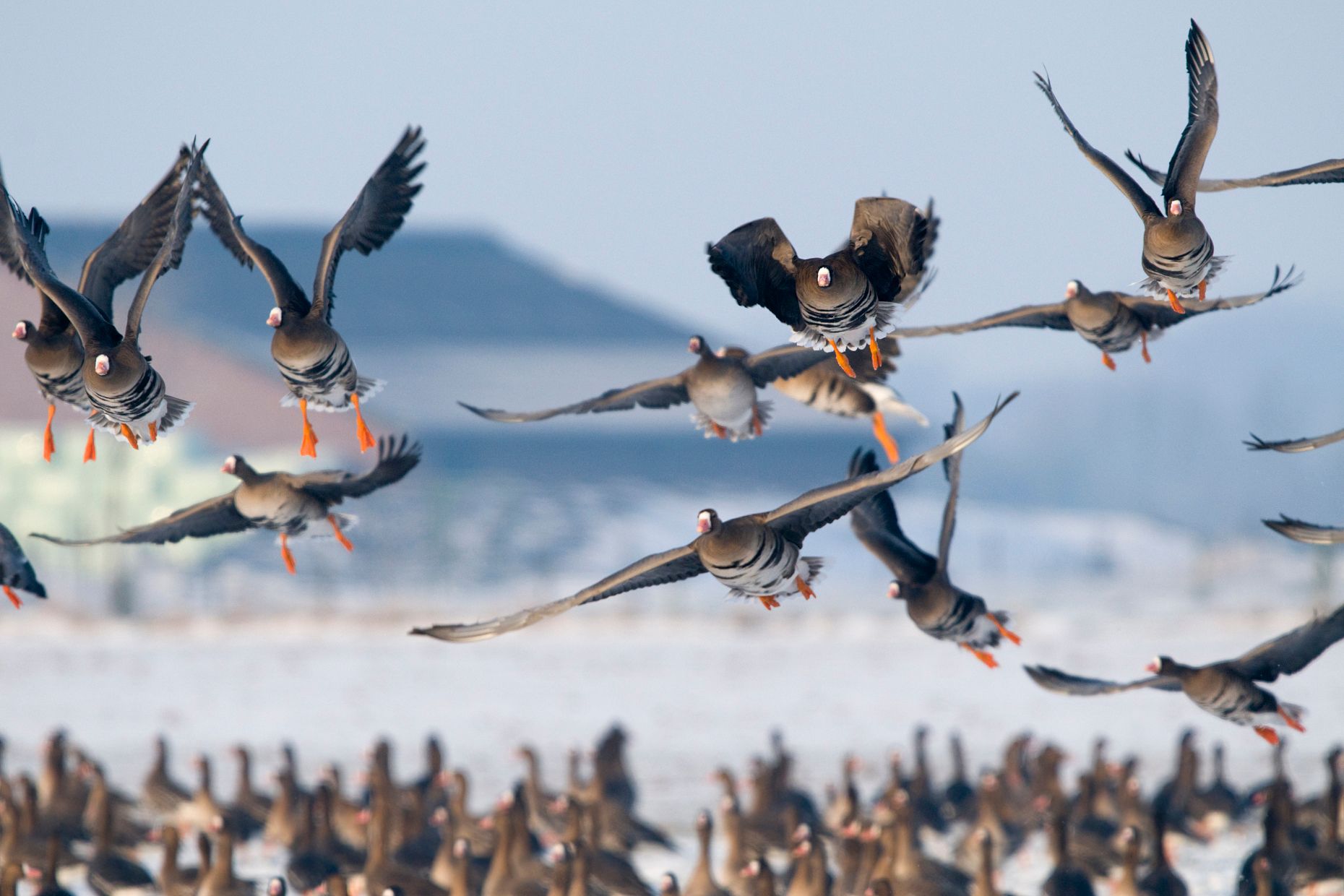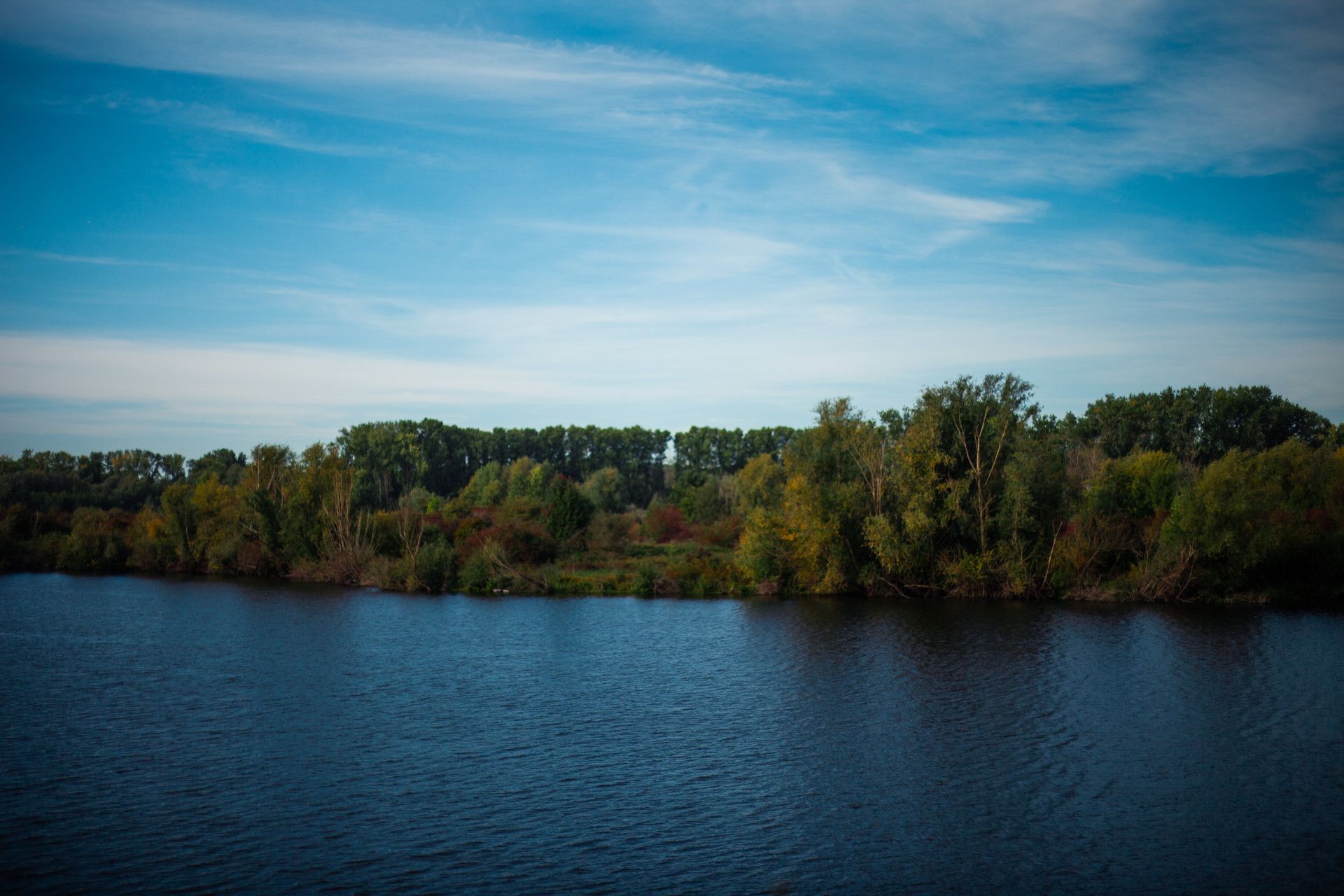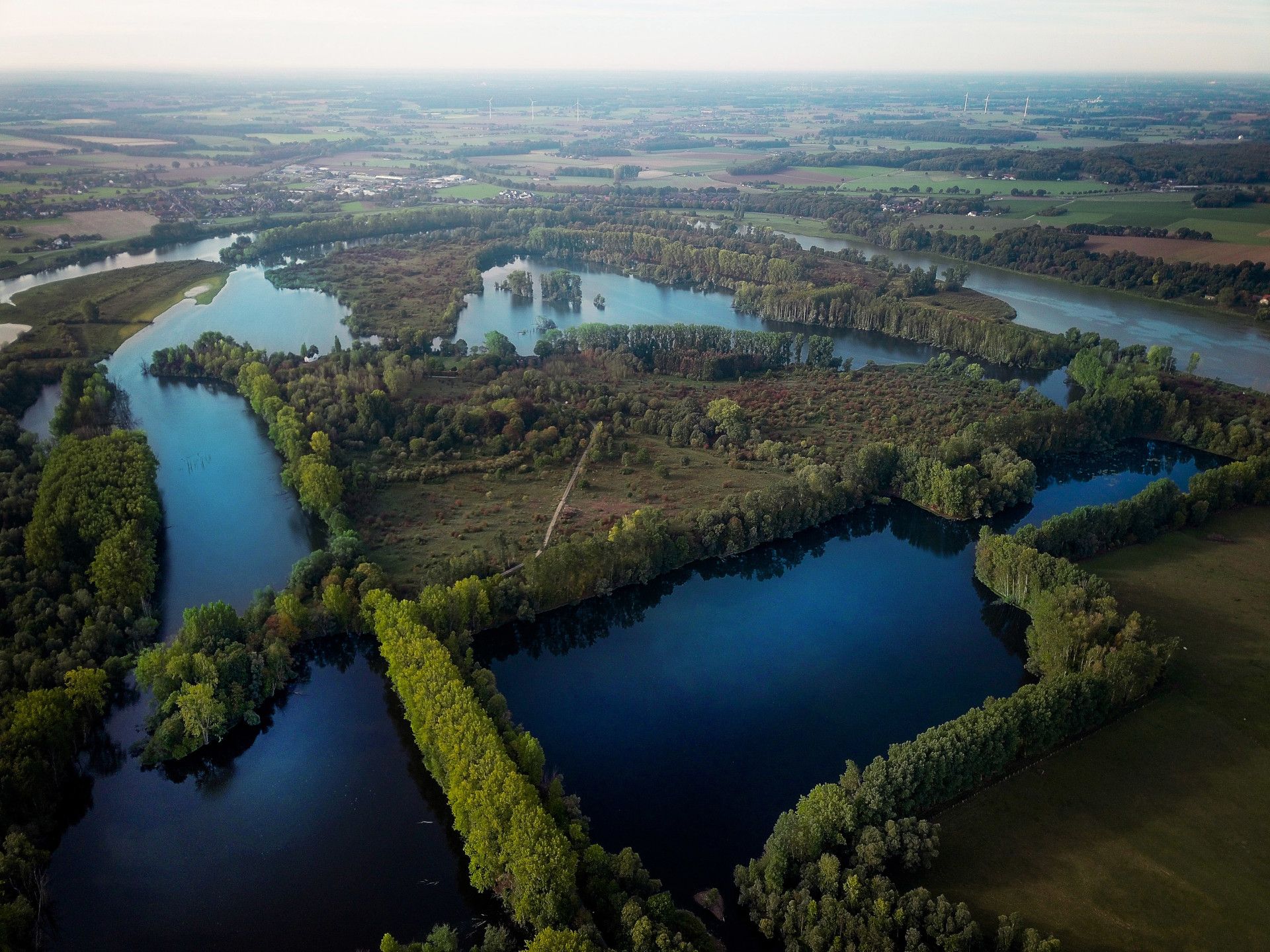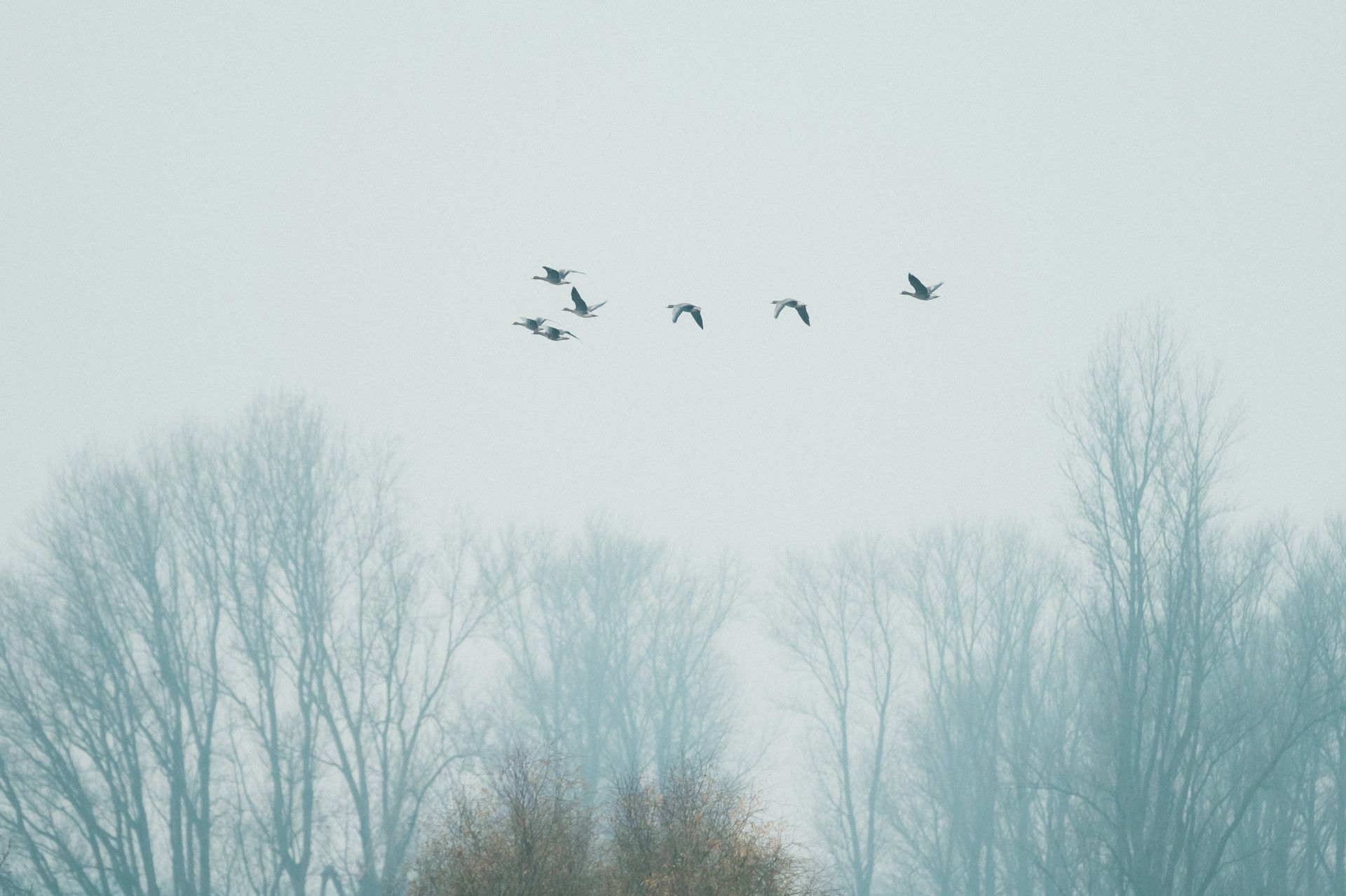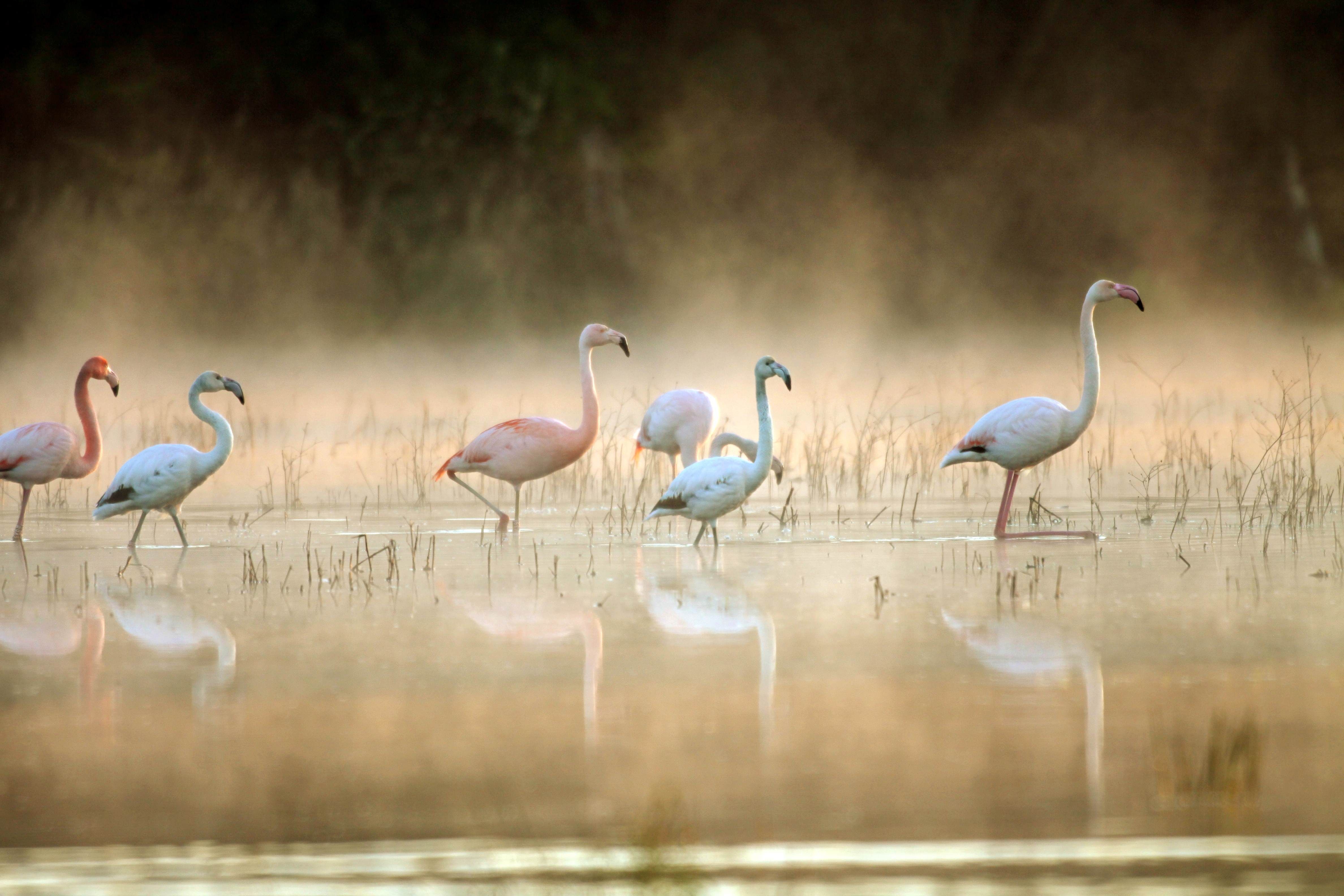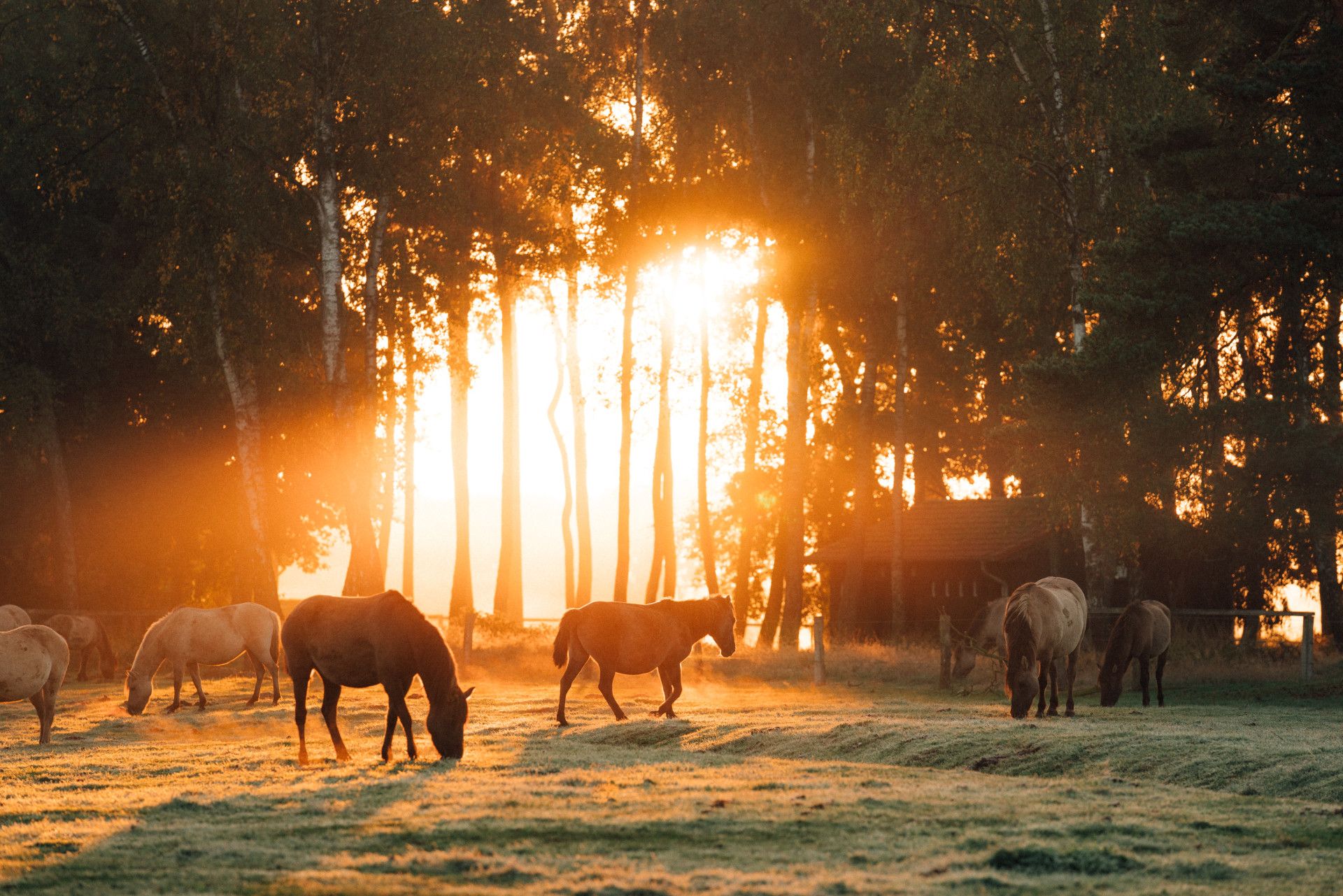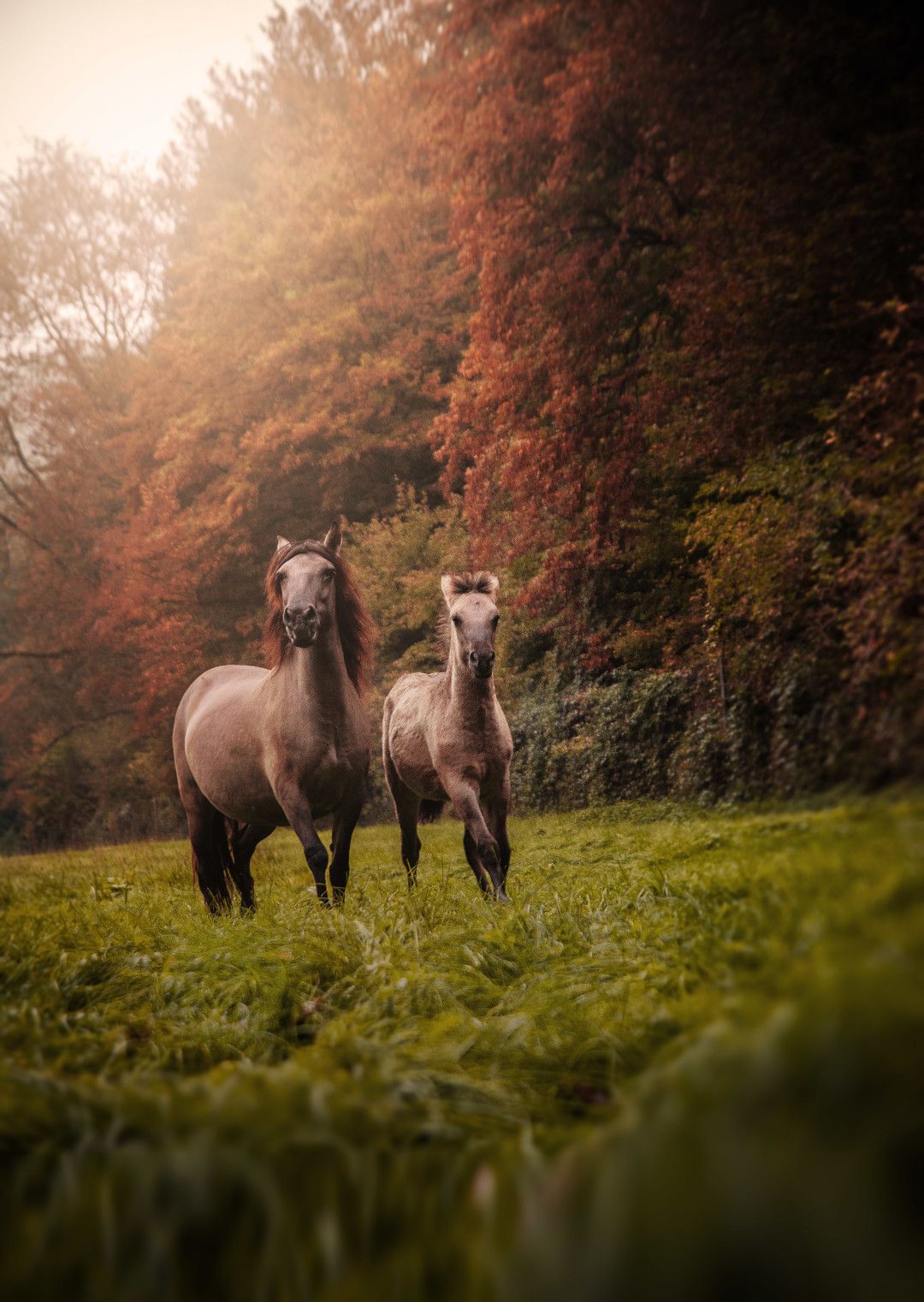An incomparable natural spectacle can be seen every winter on the Lower Rhine: up to 25,000 Arctic wild geese traditionally use the Bislicher Insel floodplain landscape as a roost for the cold season. The chattering of the animals, which use the meadows and fields between Duisburg and the Dutch border as comparatively warm winter quarters, can be heard from afar. The region is the largest resting area for Arctic wild geese in Western Europe: 30 percent of the Western European population of white-fronted geese alone spend the winter months between Duisburg and Nijmegen.
Bislicher Insel is a former bend in the Rhine, now a floodplain landscape with oxbow lakes, wet meadows and gravel banks. These diverse habitats provide food, shelter and rest for numerous animal species, and not just in winter. While the Arctic migratory birds return to their northern home between February/March and October/November, other species such as the Nile goose, but also individual white-fronted or greylag geese, have made themselves at home all year round and are increasingly staying in the region all year round. This is due to the change in climate and food availability.
The annual cycle of the floodplain landscape and the flora and fauna of the region are presented in more detail in the exhibition at the NaturForum Bislicher Insel. Guided excursions on various topics, including wild geese, depart from here on a regular basis.


